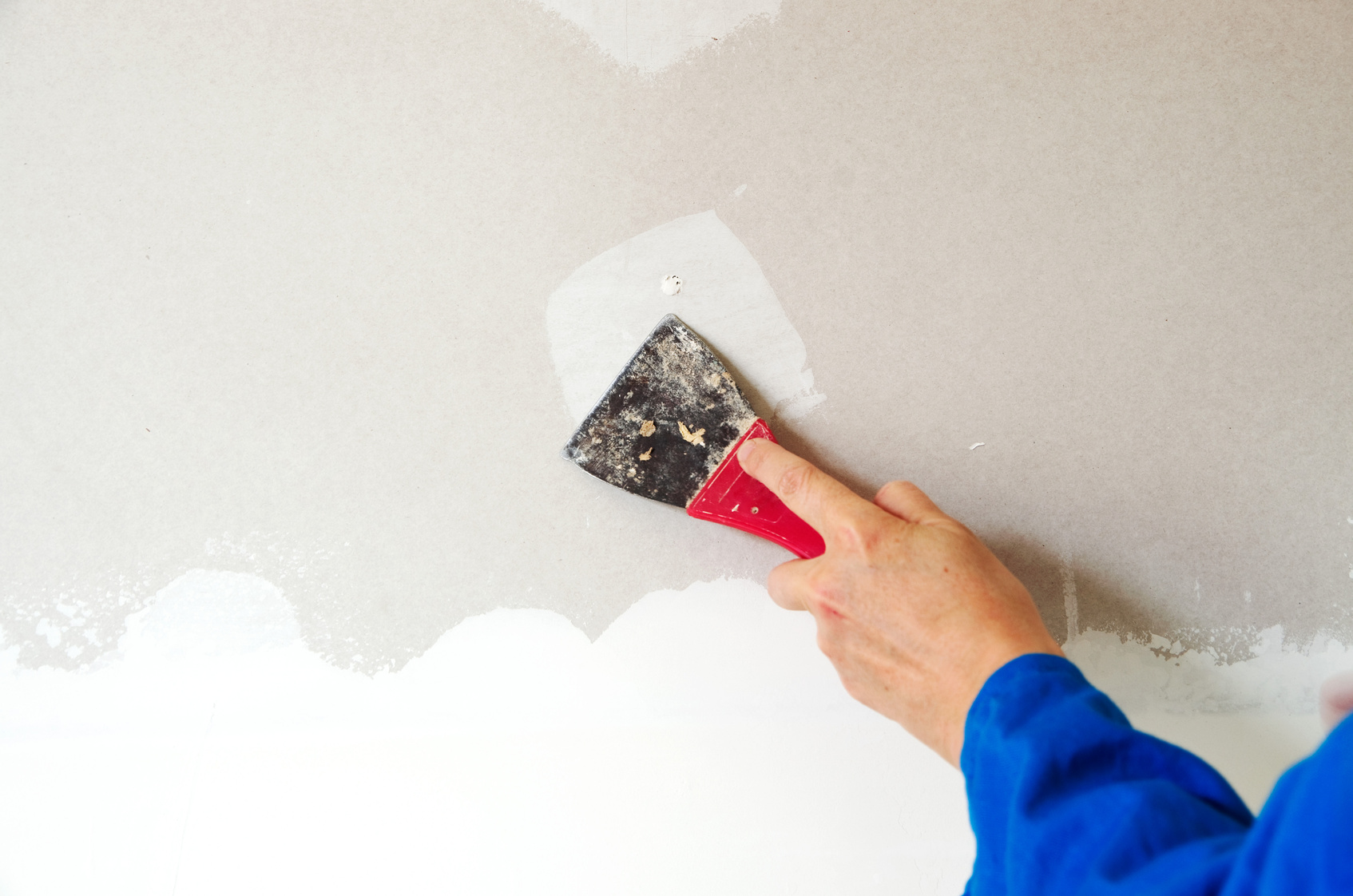Preparing the Surface for Painting

Paintwork creates the final look and personality of your home so it’s worth taking your time to prepare surfaces properly. Read on for tips on how to prepare ceilings walls and other types of surfaces for a professional paint job.
Preparing Walls
Plenty of preparation will be needed if a wall is to be painted. Even hairline cracks will require filling carefully and sanding. If the wall is a mass of cracks you may decide covering with lining paper or a heavy wallpaper before painting. Woodchip wallpaper is an excellent product for this purpose as it covers a multitude of lumps and cracks. It also takes paint very well. If your wall is a new plaster wall it should always be left for a few weeks to dry thoroughly before painting.
- Always use a primer on new plaster walls as the plaster needs to be sealed before the top coats go on.
- A previously painted wall must be washed down and rinsed first.
- Remove any old wallpaper with warm soapy water or a steamer.
- If there is mould, wash it down with bleach and rinse with water. Then treat with a fungicidal product. Use a heavy primer before you start your main coats.
- Surfaces must be free from dirt, stains and dust before you apply your paint.
- Always ensure surfaces are dry before painting.
Preparing Ceilings
Although you can paint over existing wallpaper in most cases you will probably want to strip old wallpaper off before painting. Consider buying an electric steamer as these work wonders on difficult wallpaper. Wash off any remaining adhesive. Be aware that removing wallpaper or a suspended ceiling may reveal a ceiling surface in bad condition. If your ceiling is in a bad state you may decide on erecting plasterboard or a heavy wallpaper – you can then plaster or paint over these. To make preparing and painting a ceiling that bit easier use a scaffold board and two stepladders. If it is a big room you can hire decorator trestles or scaffolding.
- Remove light fittings (turn off mains first).
- If the surface is good simply clean with warm water and/or a mild detergent. Rinse thoroughly with clean water.
- Fat or grease stains will need to be removed as much as possible as this prevents paint from holding.
- Likewise any dirt should be scraped off/washed off.
- If the surface is discoloured by nicotine apply a heavy primer first before top coats.
- Fill any minor cracks with filler.
- Major cracks may need plastering.
- Flaky or dusty surfaces can be painted with a special sealing primer first.
Preparing Wood
All bare wood needs to be treated with primer even if it is old wood which has been stripped. For a smooth finish rub down with glass paper, fine sandpaper and brush down or clean with a slightly damp cloth. Always brush/clean along the grain. A pink or white wood primer is usually OK. Resinous woods may need aluminium primer. Aluminium primer is also useful for stained surfaces, from nicotine, etc. Wood knots need to be painted with shellac to prevent resin staining the paintwork. You can also fill cracks and wood knots with woodfiller. Always use the recommended undercoat for your top coat paint. You may need more than one undercoat if you want a smooth finish on wood.
Stripping Old Paint
This is not always necessary for a smooth finish. If the gloss on the surface is solid and smooth you can simply sand down and paint over. Obviously if the existing paint is a darker colour, say pink, and you wish to paint your surface white then you will need several coats to hide the original paintwork. Old whitewash if it is flaky can often be washed off with soap and water. If the paint is heavy you can try a combination of scraping, a chemical solvent or heatgun.
- Scraping is time consuming and you can scratch/damage surfaces.
- A heat gun is efficient but you have to be careful not to overheat as you could scorch the surface, especially wood.
- Chemical strippers are less toxic than they used to be and are very efficient. You simply paint the liquid on. It peels off the paint which you then scrape off with ease. Useful for tricky surfaces too like banisters and stair rails.
Preparing Metal
Rust is a big problem for metal surfaces. Remove as much as you can with wire wool or an emery cloth. You must treat the surface with a primer formulated for rust. Give a couple of coats to be on the safe side if you wish to tackle the problem thoroughly. Non ferrous metals such as copper should be washed down with white spirit, cleaned and given a coat of primer.
Preparation is the Key
Remember, a proper amount of time spent preparing your surfaces is crucial if you wish to achieve a quality appearance. Any time saved on preparation is counter-productive, if you are left dissatisfied, or have to go back to strip surfaces and start all over again.
By: Alan Cole
Article From: www.diybasics.co.uk